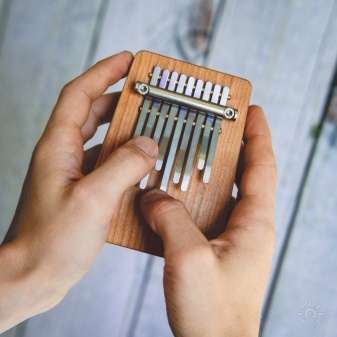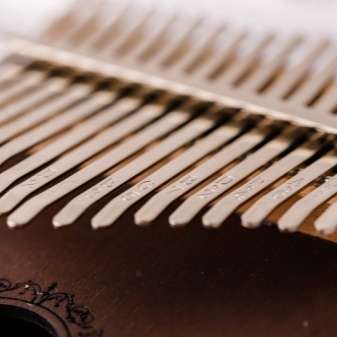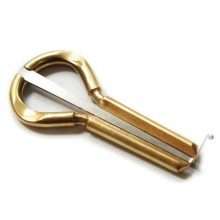
How to learn to play the kalimba?
Kalimba is one of the most ancient musical instruments with African and Madagascar roots. In its sound and appearance, it strongly resembles a harp or cymbals. The main feature of the kalimba is the presence of metal reeds, which are used here instead of strings.

How to hold?
Despite the fact that this instrument is of African origin, it gained its popularity in Cuba. It was brought here during the global colonization, and it was here that the basic rules for using this musical instrument were developed. In order to achieve the right sound, you need to correctly hold the instrument. Kalimba should be taken with both hands and kept on weight. The tongues should be pressed with your thumbs, which greatly simplifies the process of playing and prevents slipping. Movements should be as fast and light as possible, which must be taken into account when using the tool. That is why it is recommended to hold it with both hands, and focus on the working hand.
Nails play an important role in the process of using a kalimba, so it will be necessary to grow them a little to ensure a more comfortable fixation of the tongues. The length of the nails should be such that the main effort and load falls on them, and the fingers only slightly touch the instrument itself.
The force of pressing is also important, which depends on how correctly the person holds the instrument. Depending on the strength, the volume and intonation of the musical instrument itself is adjusted.
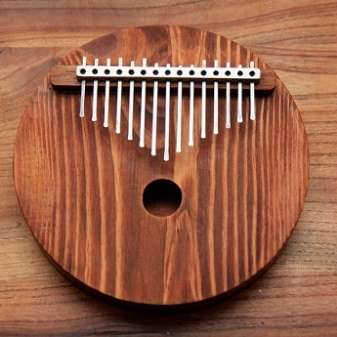

How to setup?
The main feature of the kalimba is that it has an unusual setting. That is why it is necessary to be extremely careful, since an incorrectly tuned instrument will sound completely different from what it should be. The main problem is that in conventional keyboard-type musical instruments, the sounds come in order, starting from the note si, and so on. In this regard, the kalimba has its own exotic tuning, which involves the presence of notes in the center, from which other notes diverge in a diagonal direction.
If a person has not dealt with any musical instruments before, such fixation will not cause any problems. But for people who have once played another instrument, it will be difficult to readjust and get used to the new order. Before setting up, make sure that all points are as tight as possible and ready for use. After that, you can check the sound of notes, starting from the center and ending with the remaining notes in a checkerboard pattern.
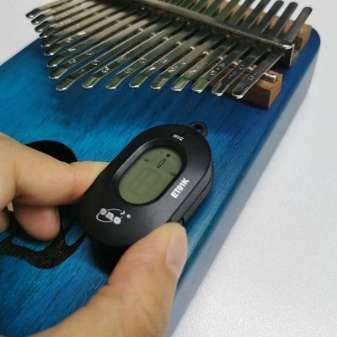
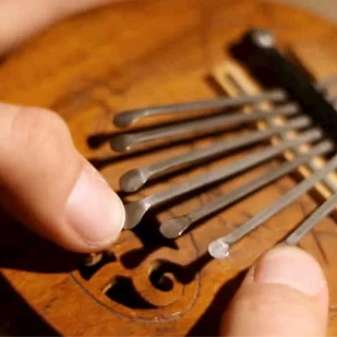
Game technique
The timbre of the sound of the kalimba depends on the size of the instrument itself. If you choose large options, you can hear a thick rumble, and miniature instruments provide a clean and transparent overflow, reminiscent to some extent of the sound from a music box. That is why at home this instrument is actively used as an accompaniment. The unique features of the kalimba allow it to be used both for background playing with chords and for an ordinary solo melody. Beginning musicians usually choose the second option. When looking for the best playing technique, you need to pay close attention to chords, which are usually different.
Learning chords is necessary if you cannot find notes or tablature for a particular piece of music. In some cases, you can also use guitar chords, which are great for playing the kalimba. One of the most important steps in learning to play the kalimba is rebuilding. Ordinary tuning involves a gradual increase or decrease in tone. However, in many works semitones are needed, which it will be quite difficult for a novice player to achieve.
In order to rebuild the tongues for a certain composition, it will be necessary to raise and shorten the tongues relative to others in the row.
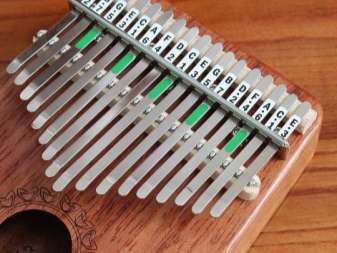
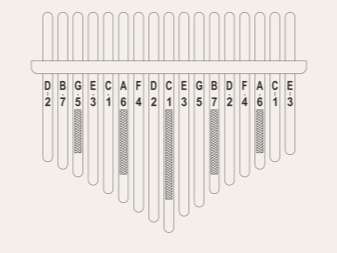
Kalimbas can also differ depending on their range, which must be taken into account when using the instrument.It all depends on the number of reeds available, the range of which can vary up to a hundred. The more reeds, the wider the range, which has a positive effect on the variety of melodies received. If you choose an instrument with a minimum range, then this will affect the game, which will be quite limited. Wider ranges make it possible to select a huge number of pieces, as well as apply chords. One of the most popular techniques is the Russian kalimba, which involves the use of a traditional musical instrument, but the use of a completely different playing principle. It will not be possible for such a novice student to learn, since here the basic principle is the free movement of the finger.
The Russian performance is to some extent reminiscent of playing the harp, and also involves the use of each finger, and not just the thumbs, as is the case when playing in the standard African style. For the Russian kalimba technique, the main thing is to free your hands so that you can conveniently fix the instrument and play it. It is best to fix the kalimba between the knees, which will allow you to give your hands freedom and move them as smoothly as possible. In addition, such a position will make it possible to produce triads with one hand, and use the other to lead the baseline. It is thanks to this that it is possible to achieve a sound so similar to the harp, reminiscent of real Russian musical works.
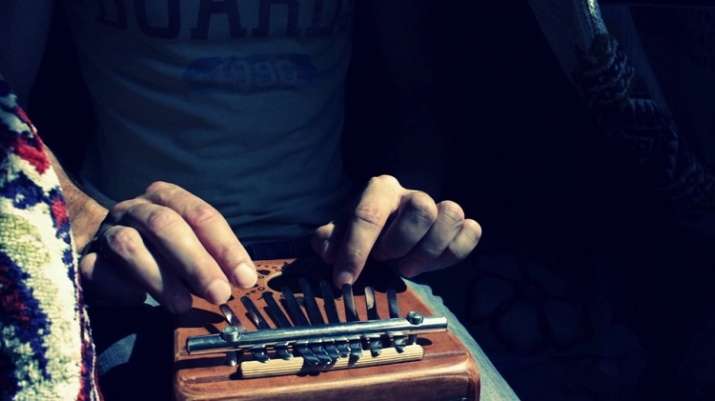
In the process of playing, very often there is a need to improve the sound of a musical instrument. To do this, you can use both ordinary tutorials and various video materials. To get the smoothest and clearest sound possible, you can connect modern versions of kalimba to a computer and other advanced devices. As a result, the output will be electronic music with a combination of national motifs. Thus, the kalimba is a rather rare and little-known musical instrument. The main advantage of the kalimba is its small size, which allows it to be played standing, sitting or while moving.
Modern online stores offer a wide variety of kalimbas, which differ in their dimensions, materials of manufacture and the presence of various additional elements. Thanks to this, every novice musician can choose the best solution for himself, taking into account the main characteristics, financial capabilities and musical works that will be played on the instrument.
For learning from scratch, it is best to take an instrument with 17 or less reeds, as well as desktop string options. There are more convenient tabs and numbers near the tongues, which greatly simplifies the process of learning from lessons.
